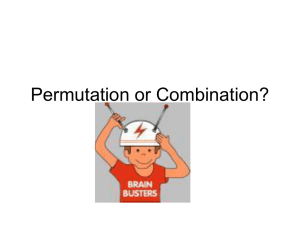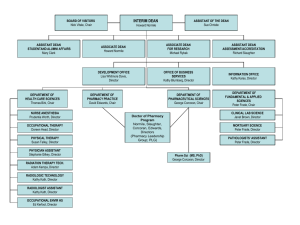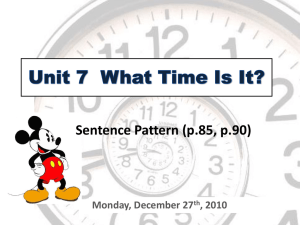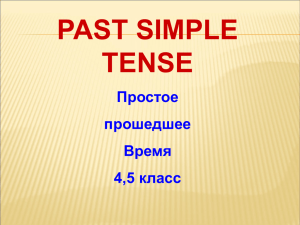Essentials of 4-Handed Dentistry
advertisement
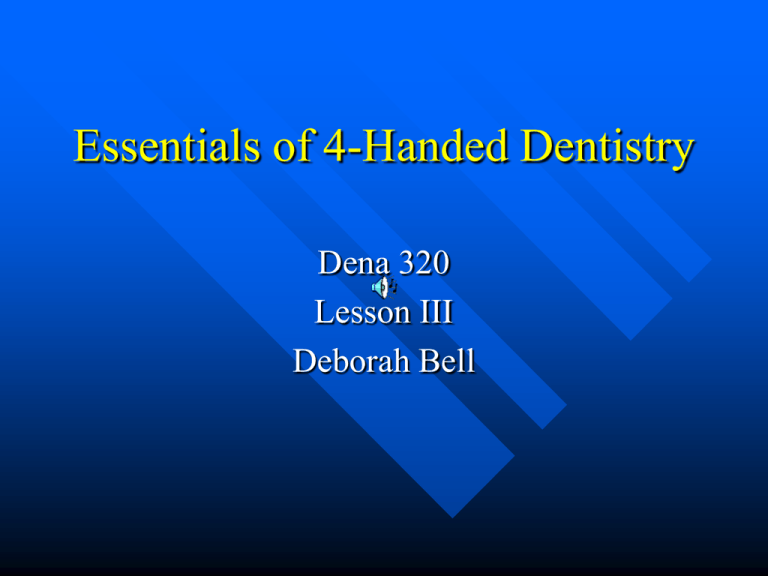
Essentials of 4-Handed Dentistry Dena 320 Lesson III Deborah Bell Major Goal in the Practice of Dentistry Deliver high quality service Deliver service as efficiently as possible Dental Procedures May Be Divided Into 3 Parts Preparation Patient treatment Clean up – A second assistant may be utilized to prepare and clean up allowing first assistant to be – Full time chairside – Thus no down time between patients Concepts important to teamwork dentistry Done in seated position Patient position Work area used Operatory equipment Availability of second assistant Instrument exchange Use of oral evacuator 2 Basic Issues of Interest in Dentistry Minimizing stress and fatigue for the dentist Increase productivity while maintaining high quality standards Dentistry is stressful and fatiguing Operator must maintain high level of concentration Keep a high level of clinical excellence by his/her ability to – Meet variety of patient needs – Perform delicate skills with limited access – Manage schedule and the practice 4-Handed Dentistry Reduces Stress Increasing efficiency Thus increasing productivity to meet demands of public Concept of 4-Handed Dentistry Operating in a seated position Employing the skills of a trained assistant Organizing every component of the practice Simplifying all tasks to the maximum 3 Major Aspects of 4-Handed Dentistry Work simplification Motion economy Body mechanics Motion Economy Conservation of motion – Movements consume time and produce fatigue Eliminate excess harmful motion Classification of Movements Class I – Only fingers » Signal for instrument transfer Class II – Fingers and wrist » Use of an instrument Class III – Finger, wrist and elbow » Mix amalgam, activating chair buttons Class IV – Entire arm from shoulder » Adjusting light, rubber dam placement Class V – Entire arm and twisting of the trunk Class IV and V Most fatiguing Requires to look away from field then refocus Results: eyestrain and headaches Class I, II, III Preferred for DA and Dr Involves less muscle activity and saves time Allows eye contact concentrated on operative field Positioning the Patient and the Operative Team Objectives of a Favorable Seated Position Access to the operative field Good visibility Comfort for the operative team Relative comfort and safety for the patient Zones of Activity Patient in a supine position Using center of patients face as a clock Zones designated as time Right Handed Operator Operator zone – 7 – 12o’clock Static zone – 12 – 2o’clock Assistants zone – 2 – 4 o’clock Transfer zone – 4 – 7 o’clock Left – Handed Operator Operator zone – 12 - 5 0’clock Transfer zone – 5 – 8 o’clock Assistant zone – 8 – 10 o’clock Static zone – 10 – 12 o’clock Positioning the Operator Work environment is adapted to the operator Operator positioned first then – Patient – Assistant – equipment Characteristics of Balance Posture for Operator Operators thighs parallel to floor Entire surface of seat used to support weight Backrest supports back without interference Forearms parallel to floor when hands are in operative position Elbows close to the body Back and neck reasonably upright with top of shoulders parallel to floor Distance of approximately 14 – 18 inches between the operator’s nose and the patients oral cavity maintained Operative field is operators midline Positioning the Patient in the Working Position Oral Cavity at height of operator’s elbow Head placed at upper end of chair and slightly to operators side of chair All patients are seated from the head down Steps to position a Patient Adjust back approximately 60 degrees to vertical Raise chair to height patient can easily be seated Raise arm of chair Once patient is seated – Armrest down – Raise chair approximately 10 inches to allow Dr. to position himself Tilt seat portion back so foot rest is raised approximately 6 to 8 inches Lower back of the chair until patient is about ½ way toward a horizontal position – Pause to allow patient to adjust Continue lower chair back until following relationships exist – Imaginary line from patients chin to the top of ankles is parallel with floor Once seated – Observe Patient Lying flat with little bending at waist Similar to sleep position Legs slightly lower than head – if higher might cause – pt. Anxiety/circulation problems. Patient in supine position – Plane of the patients forehead is also parallel with the floor Lower chair to operators lap – Approximately 1 inch above knees of operator Supine Position Universal position for all working positions Patient is lying down facing upwards Slight modifications only allowed as patients needs are assessed Patient Dismissal Patient dismissal should be accomplished by reversing the steps of seating the patient Remember to pause for the patient on the way up as well Most important patient dismissal precaution – Encourage the patient to remain seated to reestablish their equilibrium Positioning the Assistant Must be able to see and have favorable access to be able to – – – – Retract tissues Evacuate fluids View to anticipate needs of operator Maintain clear field Position of Assistant 3 o’clock position for all quadrants – Right handed operator 9 o’clock position for all quadrants – Left handed operator Stool positioned so edge toward the top of patients head is in line with the patients oral cavity Stool as close to chair as possible Stool elevated to top of assistants head is 4 – 6 inches higher than the dentist Back erect Body support arm adjusted to support upper body just under rib cage If stool positioned properly mobile cart can be pulled over lap – Approximately 2 inches below elbows Work Simplification Major advantage – Doctors Health Definition – finding an easier way to do a task more efficiently – less pt. Treatment time spent Work simplification studies indicate 4 areas to make dentistry delivery easier Rearrangement of instruments and equipment Combination Elimination Thus simplification Rearrangement Position all instruments and equipment in favorable spot to the team not vice versa to minimize movements of team Elimination Eliminating unnecessary movements, procedural steps, instruments and equipment Saves time and efforts Examples of Elimination Unnecessary bur changes – 2 handpieces Unnecessary instrument exchange – Use instrument to max. before returning Use supplies and materials that can save time – Premeasured capsules Eliminate seldom used items – Plan for usual not unusual Combination Combining steps Combining purpose of equipment and instruments Combining uses Examples of Combination Double ended instruments Using instruments for more than one purpose Air/water syringe together Cements used as base and cementing agent Simplification Last because this should occur after all rearranging, eliminating and combining activities have been completed Basic idea – to minimize number of variables in all aspects of the practice Streamlining process geared to promote predictable routines in the work pattern Standardization of Work Procedures Contributes to effective teamwork by being able to anticipate the dentist’s needs Contributes to efficiency/production Examples of Standardization for Work Simplification Arrange steps into smooth sequence Use preset trays in order of use from left to right More than one op. – Each treatment room identical in equipment » And materials Sit Down Dentistry Body mechanics/task performance studies – Seated worker uses 27% less energy – Seated worker has 17% greater life expectancy – Production increases from 33 – 78% Seated in a balance posture concept ½ the efficiency of a D.A. Is the result of working with a well-organized dentist who practices 4-handed dentistry THE END
